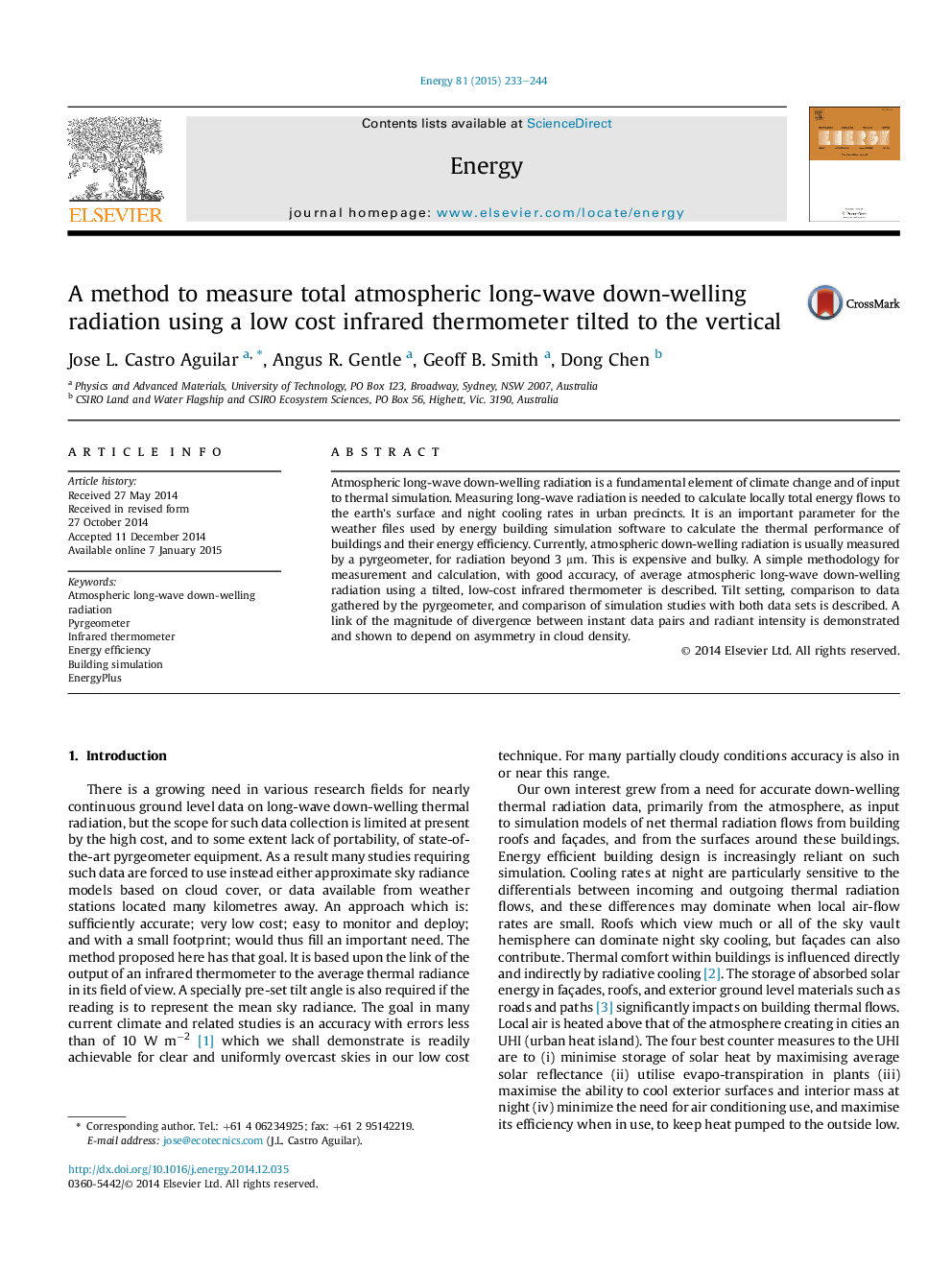| Article ID | Journal | Published Year | Pages | File Type |
|---|---|---|---|---|
| 8075673 | Energy | 2015 | 12 Pages |
Abstract
Atmospheric long-wave down-welling radiation is a fundamental element of climate change and of input to thermal simulation. Measuring long-wave radiation is needed to calculate locally total energy flows to the earth's surface and night cooling rates in urban precincts. It is an important parameter for the weather files used by energy building simulation software to calculate the thermal performance of buildings and their energy efficiency. Currently, atmospheric down-welling radiation is usually measured by a pyrgeometer, for radiation beyond 3 μm. This is expensive and bulky. A simple methodology for measurement and calculation, with good accuracy, of average atmospheric long-wave down-welling radiation using a tilted, low-cost infrared thermometer is described. Tilt setting, comparison to data gathered by the pyrgeometer, and comparison of simulation studies with both data sets is described. A link of the magnitude of divergence between instant data pairs and radiant intensity is demonstrated and shown to depend on asymmetry in cloud density.
Related Topics
Physical Sciences and Engineering
Energy
Energy (General)
Authors
Jose L. Castro Aguilar, Angus R. Gentle, Geoff B. Smith, Dong Chen,
